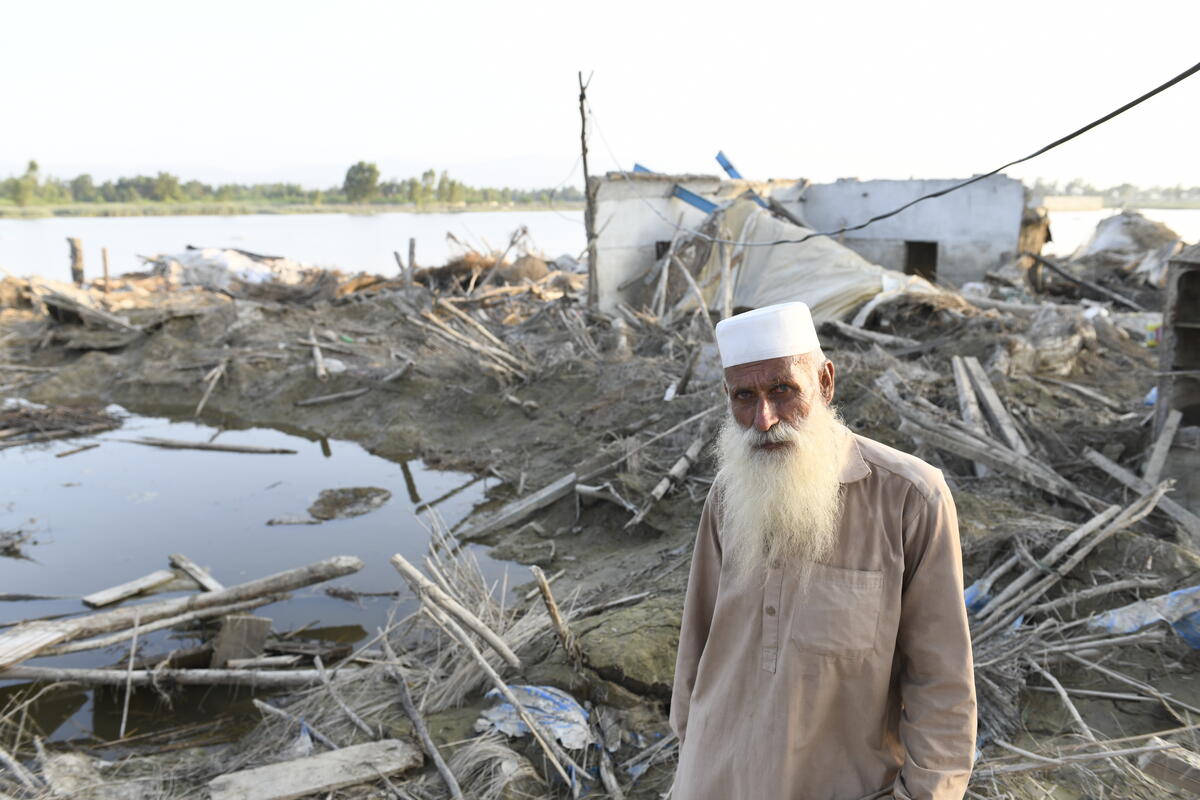Massive displacement in north-west Pakistan
Massive displacement in north-west Pakistan
There is now a situation of massive displacement in north-west Pakistan, as the confrontation between government forces and militants becomes more widespread and people take advantage of the partial lifting of curfews to move into safer areas.
The provincial government estimates between 150,000 to 200,000 people have already arrived in safer areas of North West Frontier Province (NWFP) over the last few days; with another 300,000 already on the move or about to move.
Those fleeing the latest escalation of hostilities in Lower Dir, Buner and Swat join another 555,000 previously displaced Pakistanis who had fled their homes in the tribal areas and NWFP since August 2008 and who had already been registered by UNHCR and NWFP authorities. The vast majority of the earlier arrivals - more than 462,000 people - are staying in rental accommodation or with host families. Another 93,000 staying are staying in 11 camps supported by UNHCR, other UN humanitarian agencies, non-governmental organisations and the Red Cross and Red Crescent family.
The new arrivals are going to place huge additional pressure on resources. To date, more than 83,000 people from Buner, Dir, and Swat have been registered from the new influx, including almost 5,000 staying in three new camps and more than 78,000 people who are staying outside of camps, renting houses or staying with host families. However, registration in the new camps is continuing and the figures will rise quickly. There are also reports of people from Buner arriving at the existing camps in Lower Dir. In Islamabad, Rawalpindi, Lahore and other urban centres of the Punjab, UNHCR has registered a further 40,000 displaced people mainly from Bajaur, Mohmand and Swat over the past two weeks.
UNHCR field teams report the roads out of Swat and Buner, as they converge in the districts of Mardan and Swabi, are full of traffic. A journey to Mardan, which normally takes two hours, now can take twice that long because the road is jammed.
The Jalala camp in Mardan district is one of the three camps established six days ago in response to the influx of people fleeing fighting in Buner and Lower Dir. In the last two days, an increasing number of families from Swat have gone to the camp, traveling in rickshaws, cars, small trucks and buses. Most carry little more than the clothes on their backs.
New arrivals told UNHCR staff in the camp yesterday that they had trouble finding transport and had to pay steep prices to hire vehicles. One family of 20 from Buner reported paying 30,000 rupees ($350) to travel to the camp from their home. Another man from Mingora, Swat, drove with his family in his rickshaw a harrowing seven hours to reach the safety of Jalala camp. He was in tears when he arrived yesterday.
As part of a joint UN response to the newly displaced people from Lower Dir, Buner and Swat over the past week, UNHCR has helped to establish three new camps, including Jalala and Shiekh Shehzad camps in Mardan and Yar Hussain in Swabi district. We are helping the Pakistan Red Crescent set up a fourth camp in Swabi. UNHCR site planners are currently assessing the suitability of land for additional camps in the region already identified by the government. Meanwhile, further south in NWFP, plans are underway to further expand the existing Jalozai camp, Nowshera, currently hosting some 48,000 displaced people who have fled the tribal areas since August last year.
Over the past week, UNHCR has worked with the government to set up 12 registration centres, including six in Mardan, five in Swabi and one in Charsadda districts. However, given the massive influx of people, this is not enough. We are currently discussing with the authorities plans for 75 centres in the region to speed up registration, and will also expand the number of humanitarian hubs as a key part of our strategy to help people staying outside of camps.
Yesterday, a new reception centre opened on the main Malakand Road at Jalala to give people food, water and information about the camps and registration centres. It is the first of four such centres planned on the major routes of influx to assist people as they arrive in the safer areas. Plans are also underway to provide medical care and transport assistance at the reception centres, as part of the joint UN response.
UNHCR is currently responding to the emergency with relief supplies (tents, plastic sheets, buckets, jerry cans, and kitchen sets) for 100,000 people, while procuring additional supplies for an additional 200,000.








